We visited Aldi stores in the US and the UK for the first time and were surprised by how the grocery chain is both efficient and disorganized. Take a look.
Talia Lakritz,Maria Noyen

- We went grocery shopping at Aldi locations in New York City and London.
- At the store we visited in New York, we had to insert a quarter to unlock a grocery cart.
We visited Aldi grocery stores in the US and the UK to see how they compare.

With over 10,000 stores across the world in more than 10 countries, the German grocery chain is known for its low prices and has built a loyal following.
There are nearly 1,000 Aldi locations in the UK and 2,285 Aldi locations in the US. In fact, in 2022, it was the US' fastest-growing grocer for the third year running, Insider reported, citing the real-estate-services company JLL.
In both countries, amid rising food-price inflation throughout 2022, more shoppers have been flocking to Aldi for cheaper deals, according to reports from Reuters and the BBC.
But despite Aldi's popularity, neither of us — Maria Noyen in the UK and Talia Lakritz in the US — had ever shopped at one before. Because of that, we were curious to see what shopping there would be like and how our experiences would compare.
In New York City, the Aldi store we visited was located in a shopping center in the Bronx.
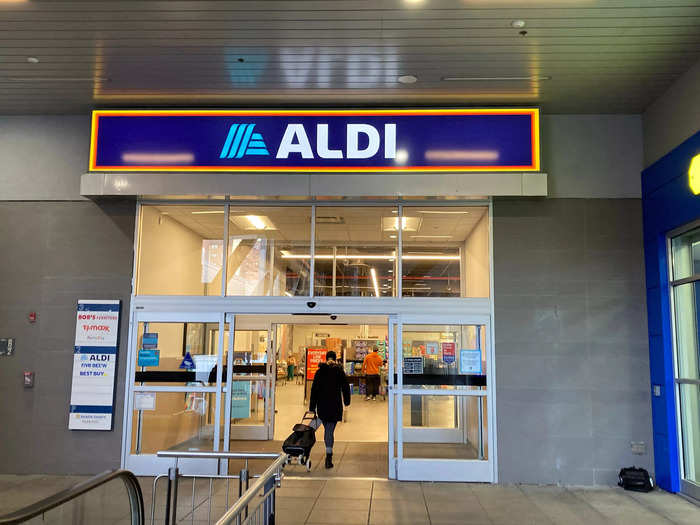
The complex also featured stores such as Best Buy, TJ Maxx, Party City, and Bob's Discount Furniture.
Meanwhile, the store we visited in the UK was near a residential neighborhood in west London.
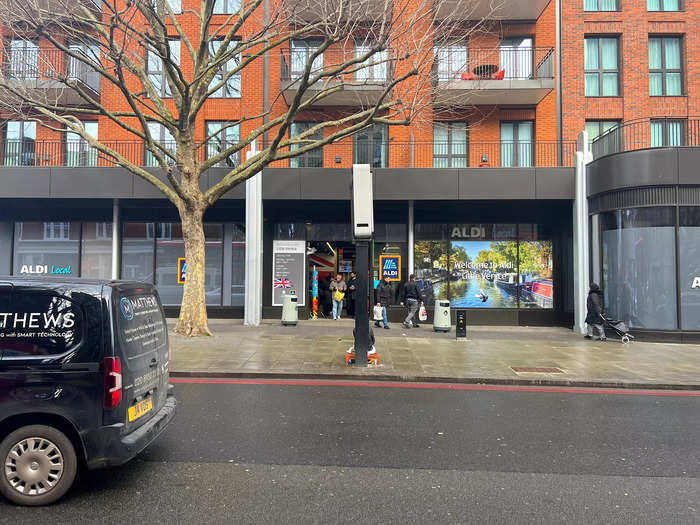
The store is in Maida Vale, which is roughly a 25 minutes walk from where our UK-based reporter lives in Notting Hill.
At the store we visited in the US, Aldi shopping carts required a quarter to unlock.
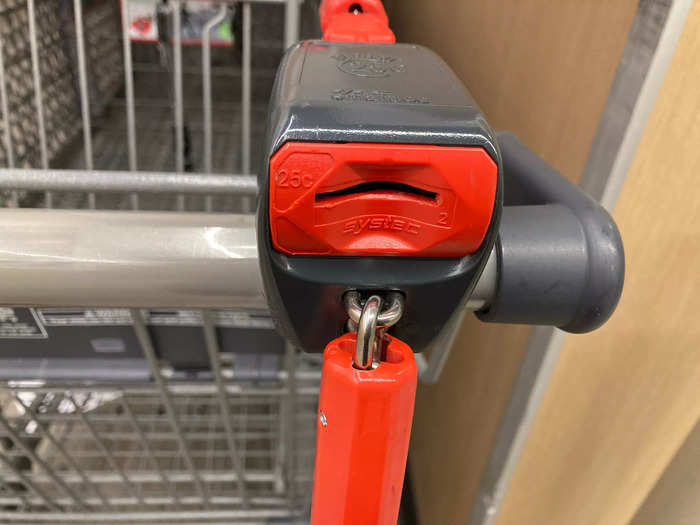
Aldi calls the quarter a"deposit." When shoppers have finished their shopping and return their carts to the corral, they get their quarter back.
A sign at the checkout counter explained the reason for the locked shopping carts: "No extra staff to wrangle carts means extra savings in your pocket."
At the Aldi we visited in the UK, there weren't any grocery carts available.
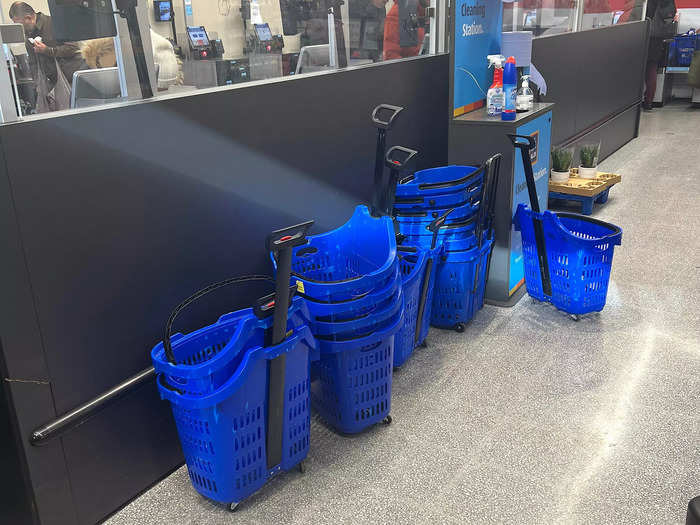
At this store, shoppers could either choose from large blue roller carts or regular grocery baskets to put produce in while going around the store. Neither required money to use.
Upon entering the US store, the shelves at the entrance stocked snacks like crackers and cookies.
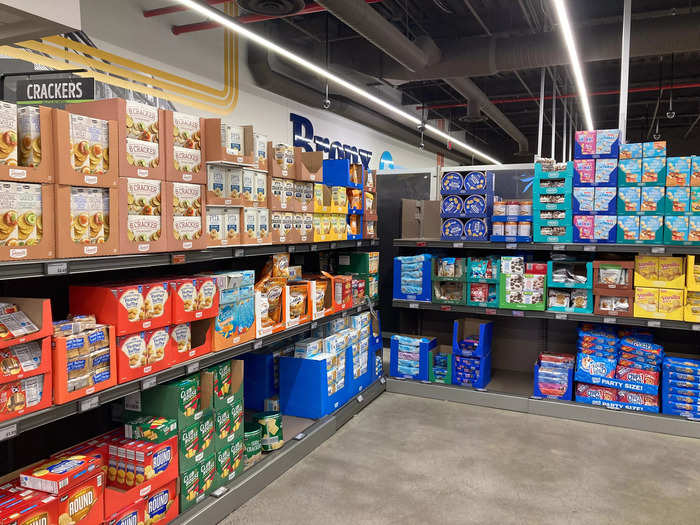
There were some brands that we recognized, like Goldfish and Cheez-Its, but most of the products were from Aldi's store brand, Benton's.
The branding on some of Aldi's generic items at the US location appeared to intentionally mimic that of name brands.
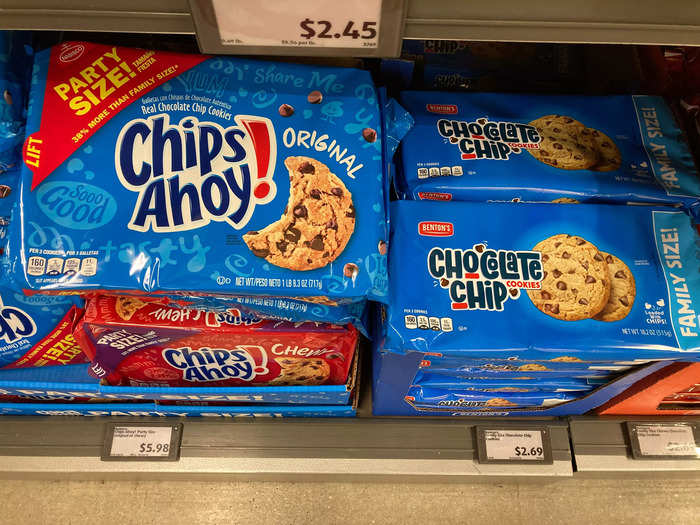
At first glance, it was easy to mistake Aldi's version of Chips Ahoy! chocolate-chip cookies for the real thing. The biggest difference was the price: Chips Ahoy! cookies cost $5.96 (about £4.97) for a package weighing 1 pound 9.3 ounces (about 24 cents per ounce), while the Benton's brand at Aldi cost $2.69 (about £2.24) for 1 pound 2.2 ounces (about 15 cents per ounce).
In the UK, we were greeted by a large display of flower bouquets.

Before getting to any produce or packaged food, shoppers passed by a colorful display of flowers.
Close by, there was an Aldi employee seemingly keeping an eye on people entering and exiting the store.
After the flowers, the first type of food on the shelves by the entrance was a selection of fresh fruit and vegetables chosen for the store's "Super Six" discount.
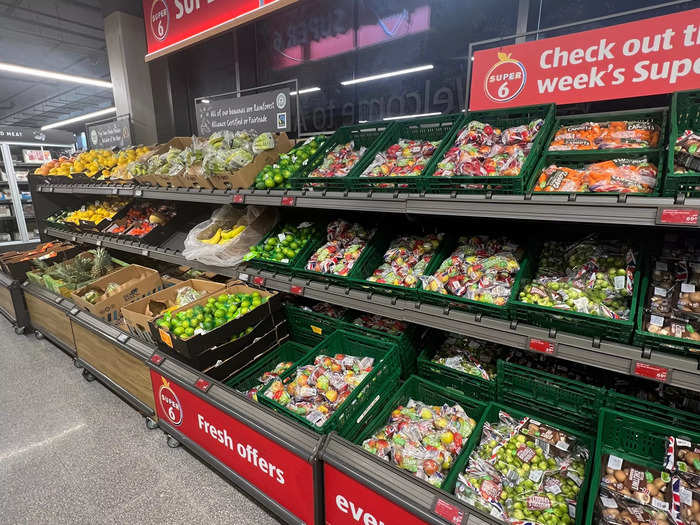
At its stores in the UK, Aldi chooses six fruits and vegetables to sell at discounted prices to customers every two weeks at no extra cost to its suppliers.
The discounted produce this time around included Brussels sprouts and mini apples. The sprouts were discounted from their original price of £0.95 ($1) to £0.69 ($0.80). Meanwhile, the mini apples were discounted from £0.95 ($1) to £0.59 ($0.70).
There didn't seem to be an obvious reason as to why one was discounted to a cheaper price than the other.
Unlike other US grocery stores that unbox items to display them on shelves, Aldi stocks them in their original cardboard packaging.
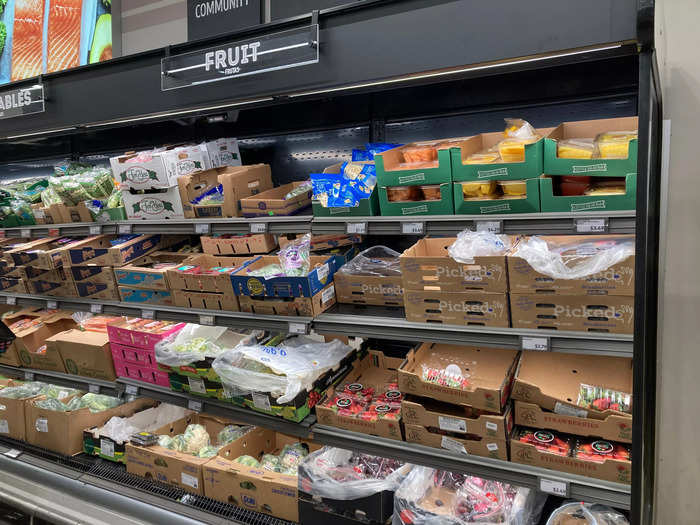
The "retail-ready packaging" acts as both a shipping container and a display tray, saving time and money by reducing waste.
Likewise, many food items at the Aldi in the UK were left in their original cardboard boxes.
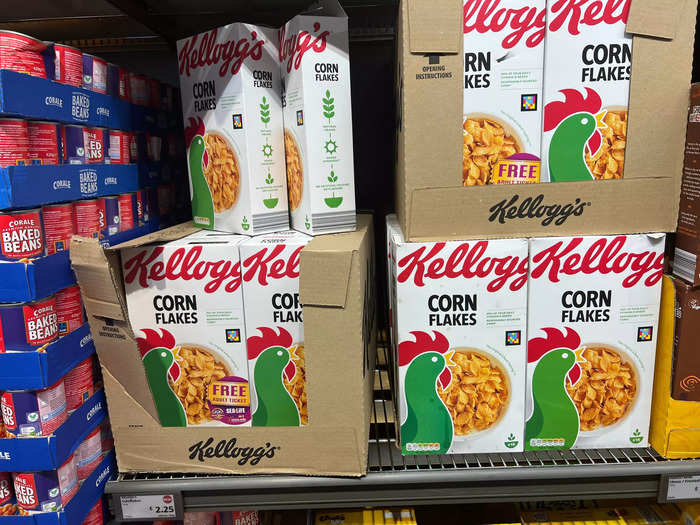
The only items that were unboxed at the UK Aldi were located in the frozen section and some of the fresh produce. Seeing items still in their original cardboard box packaging isn't common in other UK grocery-store chains, either.
In New York City, Aldi's aisle of housewares at the store we visited appeared messy and disorganized.
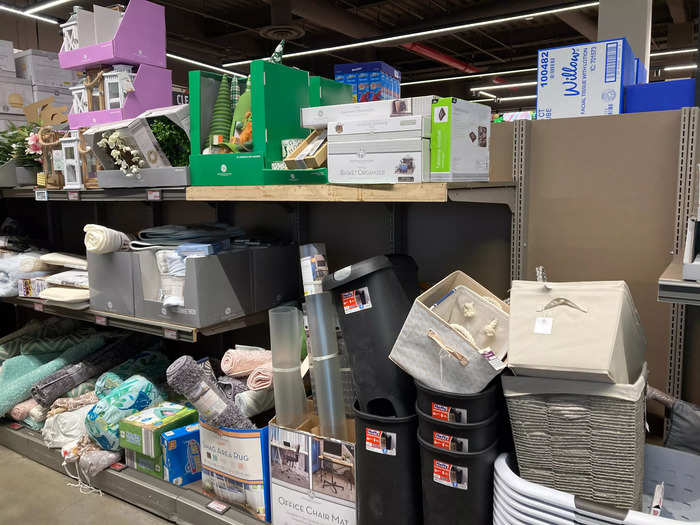
With so many products stacked haphazardly on top of one another, it was hard to tell how much anything cost.
Aldi US did not immediately respond to Insider's request for comment.
There were some items in the New York store that appeared out of place, such as a box of rugs in the freezer section.
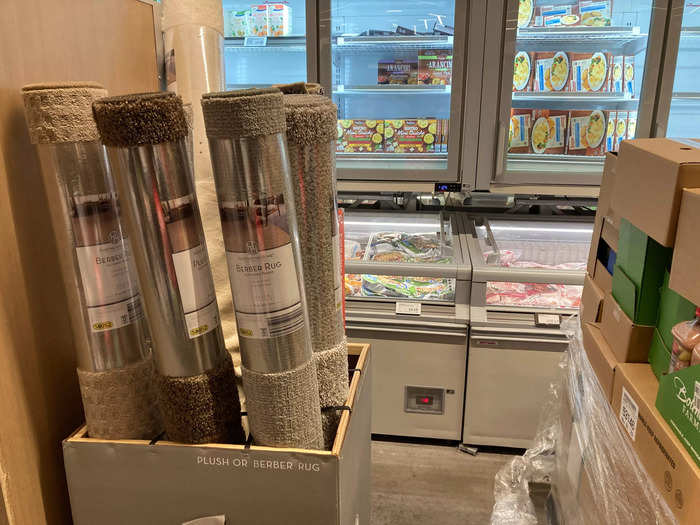
The clutter made some grocery items difficult to find.
Insider reached out to Aldi US for comment on the store's organization.
There was also a level of disorganization at the Aldi in the UK, such as these randomly placed plant pots by the checkout area.
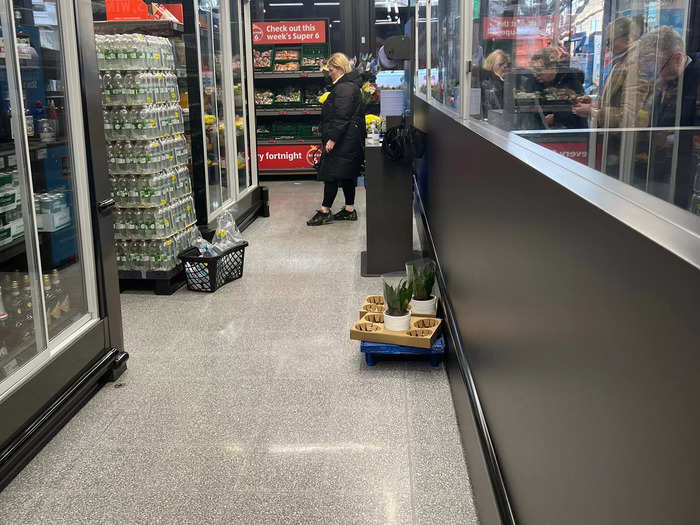
There was no gardening or house-plant section in the store, which made these look even more out of place.
Aldi UK did not immediately respond to Insider's request for comment.
Elsewhere in the UK store, we spotted a bunch of leaky egg cartons on the shelves.
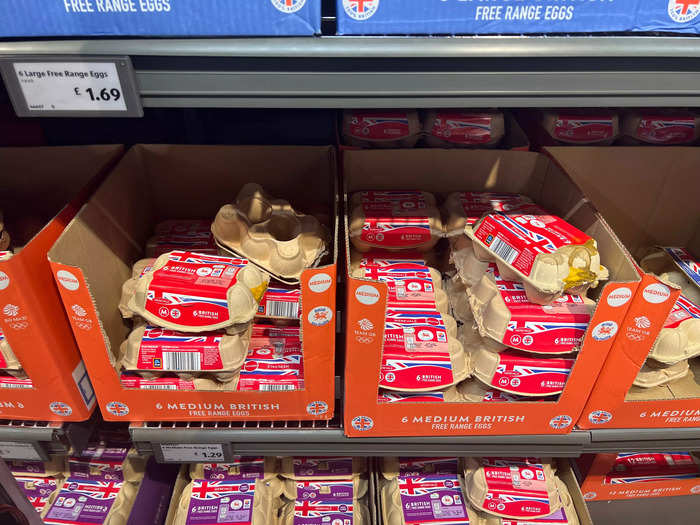
Yellow goop from the yolks of broken eggs, which cost £1.29 ($1.70), dripped across the shelf.
But while some of the cartons did not seem very well organized in the egg section, most of the others were stacked neatly.
The US Aldi stocked some locally sourced items, like SnapDragon apples that had been grown in New York.
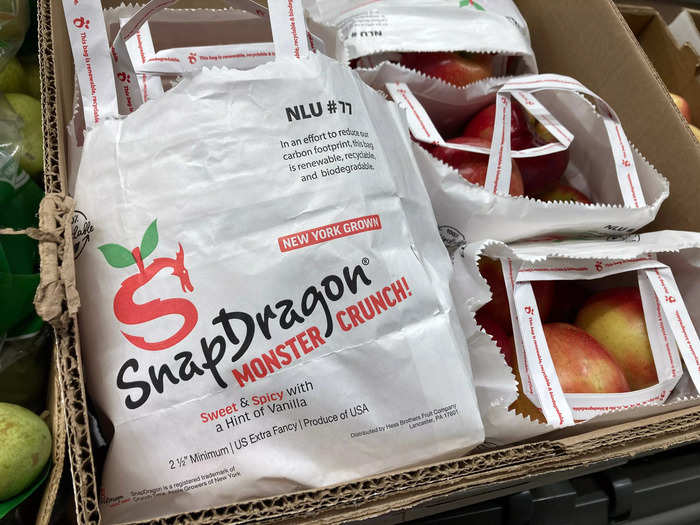
Sold in recyclable, biodegradable bags, the SnapDragon apples cost $1.79 (£1.49) per pound.
In the UK, many items, like cheddar cheese, were branded with the Union Jack and advertised as locally sourced.
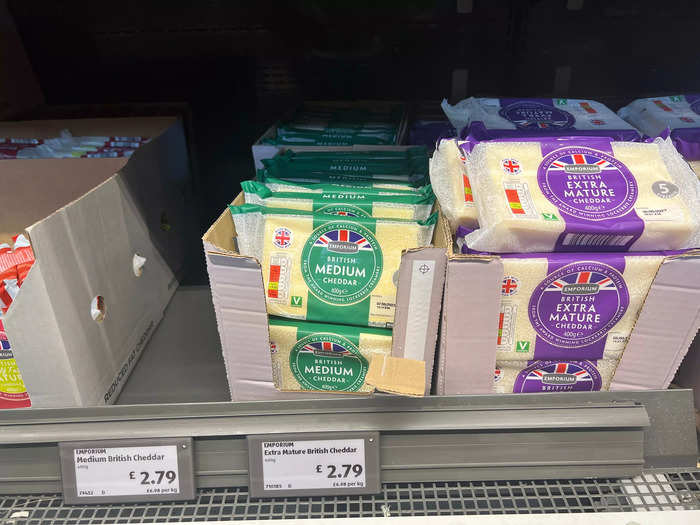
Aldi's Emporium-brand cheddar cheese, which cost £2.79 ($3.30) was one of many grocery items that had the British flag somewhere on its branding.
The packet also told consumers that the milk used to make the cheese came from the UK.
In the US, Aldi featured unique products that we've never seen before, such as pineberries.
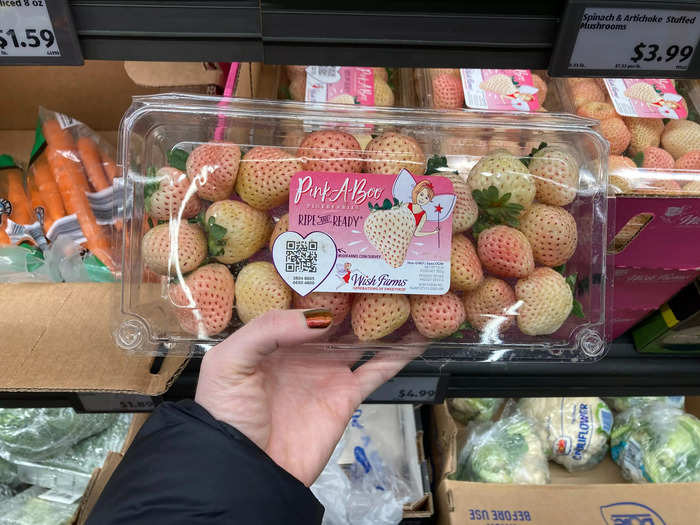
Grown by Wish Farms in Florida, pineberries are white strawberries with hints of pineapple, pear, and apricot flavors. Aldi sold them for $4.99 (£4.15) per box.
Although no Aldi store has a hot-food section, the UK grocery store did have a bakery that sold fancy pastries like Portuguese custard tarts.
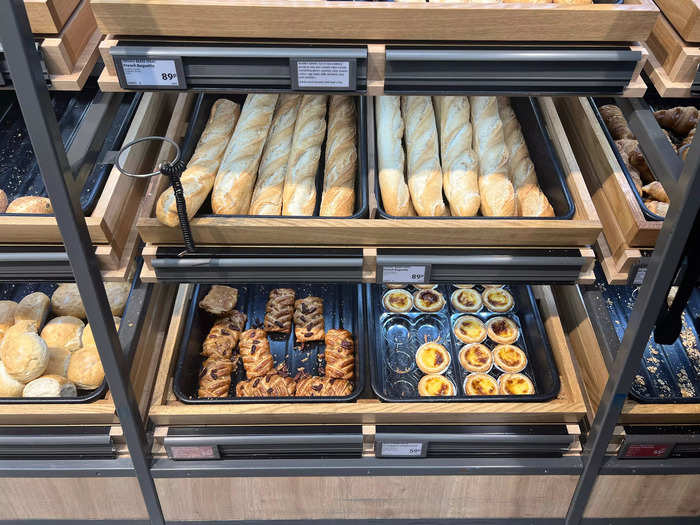
Other pastries on offer included maple pecan plaits, croissants, cinnamon rolls, and doughnuts.
The New York location did not have a fresh bakery section.
The checkout line at Aldi in the US stretched all the way down the paper-goods aisle.
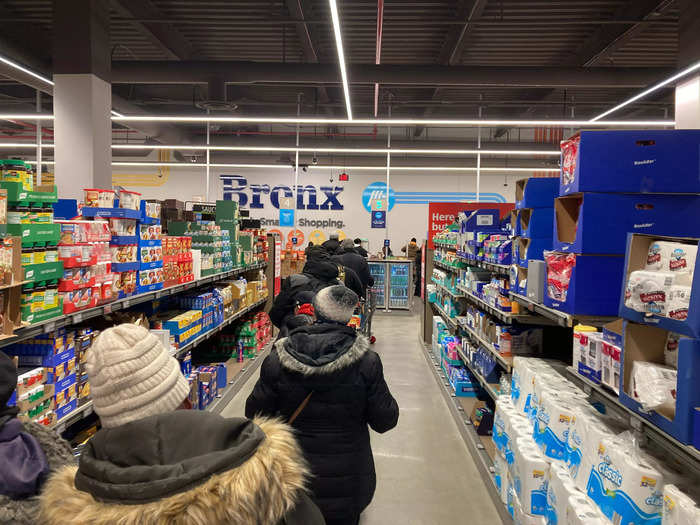
We visited on a Monday around noon, and didn't expect to encounter so many other shoppers.
There were no self-checkout kiosks or express lines for people with fewer items, which contributed to the long lines.
Similarly, the checkout line in the UK was much busier than expected for a workday.
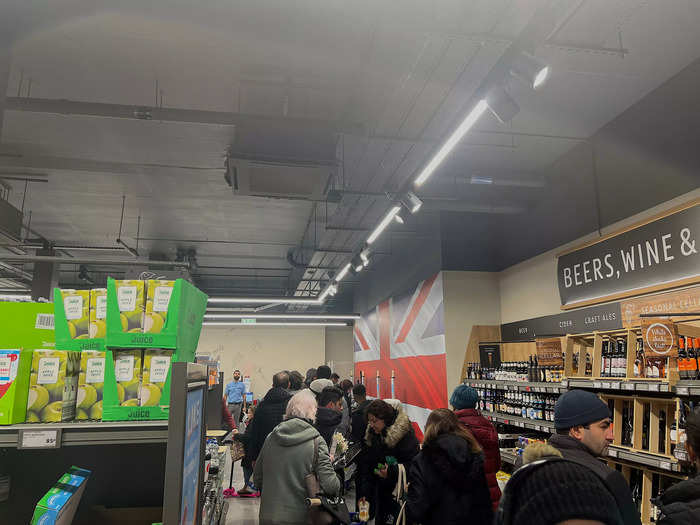
Granted there may have been a few customers there during their lunch break, but we found the Aldi in the UK to be busy at 1 p.m. on a Friday.
That also meant the checkout line was packed. The queue moved relatively slowly since the only way to pay was through self-checkout machines that some customers appeared to have trouble using.
Additionally, there was only one person managing the line and addressing checkout issues, so the entire experience ran less smoothly than it likely would have with a few more cashiers.
While our shopping experiences in both countries shared some similarities, grocery prices were much lower in the UK.
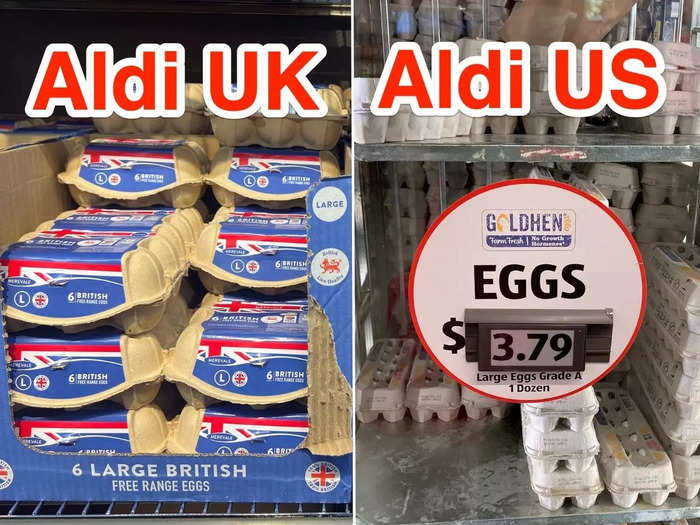
Some dairy products, such as milk and butter, were slightly cheaper in the US, but grocery shopping at Aldi in the UK proved much less expensive overall.
For example, a family carton of 15 eggs cost £2.29 ($2.70) in the UK, while a dozen eggs cost $3.79 (£3.15) in the US, and loaves of whole-wheat bread and bags of salad mix cost nearly twice as much in the US as they did in the UK.
In the end, we both left our respective Aldis with mixed feelings about the grocery-store chain, but we wouldn't rule out coming back again.
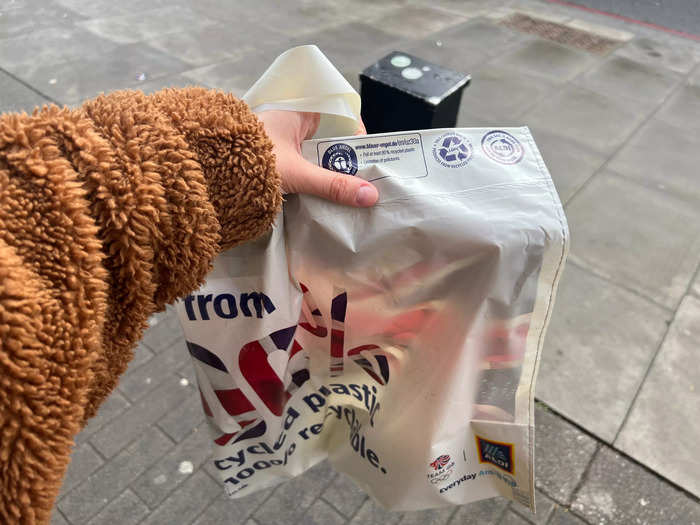
Aldi's disorganized aisles and long lines were consistent in both stores we visited. But with their retail-ready packaging and steep discounts helping keep prices low, we can see how the store has earned a loyal following on both sides of the Atlantic.
Popular Right Now
Popular Keywords
Advertisement